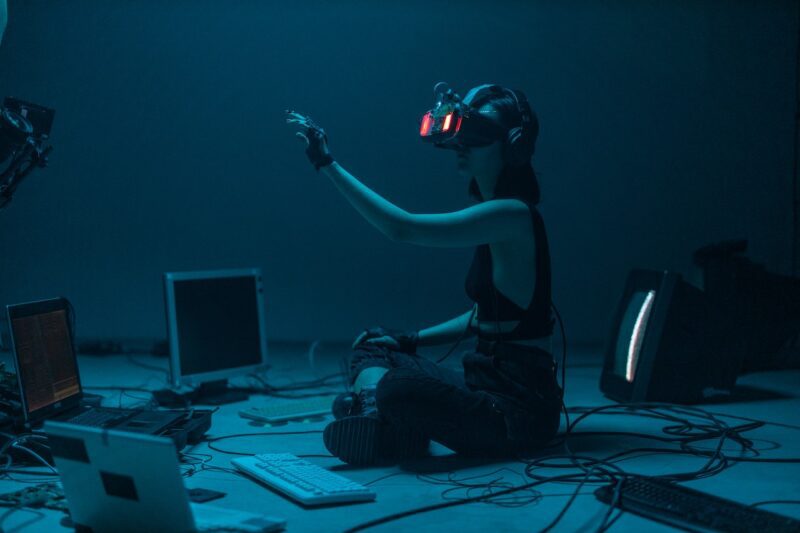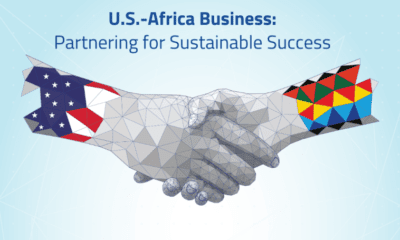Global Issues
The Invasion Of AI: Will Human Interaction And Apprenticeship Be Replaced? -By Caleb Onah
In addition, our human voice is a reflection of our inner emotion and emotional state. There is a big difference in the tone of people when we are happy, moody, excited and sad. The tone and pitch of the voice change the entire communication process. AI and ML tools are robots and there is no emotion in them.

Artificial Intelligence (AI) has certainly proven to be a leap forward that has taken global technological advancement to the next level and with plans to completely change our way of life. We can see it in self-driving cars, self-diagnosis of health problems, smartphones, homes, and personalised treatment.
Today, the usual arrangements for apprentices may no longer be relevant, as online learning can take place in almost any location. Building on the huge amount of big data collected by data analysts around the world over the past few years, modern AI developments are being used to improve all kinds of business needs – from marketing to sales, to customer service, and to human resources (HR).
New predictive models of human behaviour are becoming more refined, and new sciences, such as social physics, are emerging to help us understand society as a whole. But as a leader, one of the most controversial uses of AI and ML is augmented analytics to understand and emulate human behaviour and interactions.
Oxford University Professor and New York Times best-seller, Nick Bostrom’s, in his book Superintelligence: Paths, Dangers, Strategies originally published in 2014, this book resonated with these debates by highlighting everything that can go wrong with AI. But in a recent conversation with Bostrom, he conceded that AI technology has significant advantages.
Since Bostrom’s book was written in 2014, artificial intelligence, machines, and deep learning have made rapid progress. Artificial intelligence is being discussed publicly, and most governments have some sort of strategy or roadmap to tackle and implement AI. In his book, he talks about AI like kids playing with a time bomb that can explode at any moment. “There’s a mismatch between our level of maturity in terms of our wisdom, our ability to cooperate as a species on the one hand and on the other hand our instrumental ability to use technology to make big changes in the world. It seems like we’ve grown stronger faster than we’ve grown wiser”, explained Bostrom.
We are facing the challenge of artificial intelligence (AI) that is changing the way we interact with each other as humans. With new technologies changing the delivery of learning programs, especially in terms of methodology and localisation. Advances in information and communication technology tend to blur the conventional lines between the workplace, classroom and human interaction, where on-the-job and off-the-job training has traditionally taken place, side-lining human emotional interactions.
The leading career and transformational skills academy based in Manchester trains future practitioners in science, technology and business leadership who are responsive to the latest developments and developers in the world of artificial intelligence (AI) – with Google’s AI chatbot, OpenAI/Microsoft’s, and the emergence of ChatGPT, Bard and the threat it poses to job skills and apprenticeship training, asserts while many industry experts are calling for impact analysis of the latest AI chatbot tool to join ChatGPT, the big question for everyone is how AI will affect and disrupt business operations and daily life interactions.
Jemma Perks, director of science at S&A Academy of Sciences & Labs, advocates using AI as a substitute for learning and human learning for science education and lab learning will have an adverse impact on apprenticeship and vocational training. Interaction between people and society is an essential component of the apprenticeship training process. One of the biggest downsides is the lack of human-to-learner interaction, AI cannot replace the experience of social interaction and can lead to feelings of isolation and inefficiency with learners or apprentices. With complex topics, learners can get frustrated with the process, which will hinder their progress, and with too much reliance on AI it can affect thinking skills.
Furthermore, according to Laurence “Floz” Martin, Head of Product & Innovation at S&A Transform Group, although we are right to be concerned about the advancement of AI and its impact on business, industry and society, but this does not pose a threat to job skills and industry training at this stage,“If we look at AI and ChatGPT, it’s no different from Stochastic Parrotry. Stochastic uses calculations to analyze what would be the best answer that pleases us – so that’s statistical analysis. Parrotry in this sense isn’t about inventing anything someone hasn’t done before, effectively repeating millions of lines of code and information it has read”.
Earlier, the great Stephen Hawking of blessed memory in 2014 once told the BBC that “The development of full artificial intelligence could spell the end of the human race…Humans, who are limited by slow biological evolution, couldn’t compete, and would be superseded”. However, it can be conclusively stated that, based on human reasoning and interaction, as Bostrom advises, rather than avoid pursuing AI innovation, “Our focus should be on putting ourselves in the best possible position so that when all the pieces fall into place, we’ve done our homework. We’ve developed scalable AI control methods, we’ve thought hard about the ethics and the governments, etc. And then proceed further and then hopefully have an extremely good outcome from that”.
Based on technical experience, machines can “never” reach 100% efficiency, the correlation between AI and accuracy calculated in different studies will always hold different values due to the multitude of AI forms. Some studies tell us that machine learning is about 90% accurate, plus or minus 5%. However, it is important to note that AI is, in fact, man-made and may not necessarily be so precise. If you’ve used an AI-powered device in the past, you’ll notice that some of their answers to your questions aren’t quite right.
No matter how advanced Artificial Intelligence (AI) and Machine Learning (ML) applications are today, they still lack the warmth and care that is central to human interaction. Robots may be good listeners and give appropriate advice, but they have no emotions. They cannot comfort wounded souls or offer anything other than simple advice. Based on context and environment, as humans, we can understand context (because we grew up in it or because we were taught) – and the robot will not or wouldn’t be able to conduct analysis and appropriate context.
In addition, our human voice is a reflection of our inner emotion and emotional state. There is a big difference in the tone of people when we are happy, moody, excited and sad. The tone and pitch of the voice change the entire communication process. AI and ML tools are robots and there is no emotion in them. Their tone and voice are even and emotionless. And that’s where it falls behind in human interaction.
Irrespective of the programmed response from AI machines to humans, it is likely that humans will form stronger emotional bonds than these machines. Therefore, AI cannot replace humans, especially when communicating with others for business growth or administering specific treatments, yet still not a threat for its development of certain new concepts and ideas to navigate through daily life challenges. In recent years, telecommuting has become increasingly popular – some people work remotely, from home or in multiple locations. At the same time, e-learning platforms have also transformed training outside the workplace, which has traditionally involved face-to-face instruction.

















